São Paulo welcomes its latest cultural addition in the shape of SESC Avenida Paulista
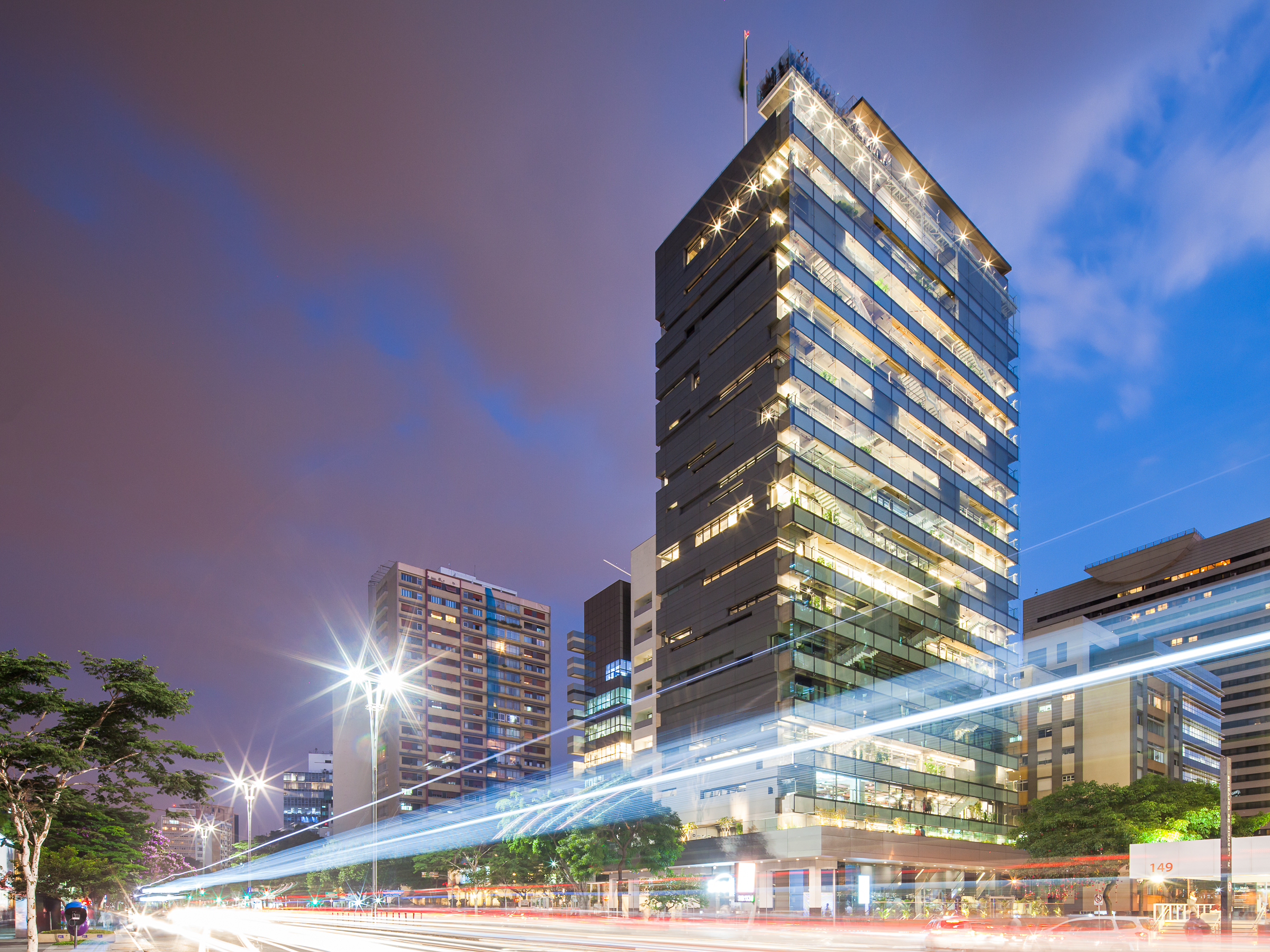
Brazil’s SESCs (Serviço Social do Comércio) have been a long-standing tradition in the country's cultural history, ever since their invention in the 1940s. Key outposts have been designed by acclaimed architects, such as Lina Bo Bardi (her SESC Pompeia is as iconic as they get) and Oscar Niemeyer (his SESC Copacabana was completed in 1982). Now, São Paulo-based Königsberger Vannucchi has designed the typology’s latest addition; a multi-functional tower on the Brazilian metropolis’ Avenida Paulista.
Founded and run by private businesses, the Social Service of Commerce – SESC – is a unique set-up that looks after the welfare and quality of life of workers within the sectors of goods, tourism and services, promoting cultural education and health. So, SESC Avenida Paulista underlines the famous São Paulo stretch’s growing cultural output, joining Andrade Morettin Arquiteto’ Instituto Moreira Salles, Kengo Kuma and FGMF’s Japan House, and Lina Bo Bardi’s MASP, all of which are located a stone's throw away.
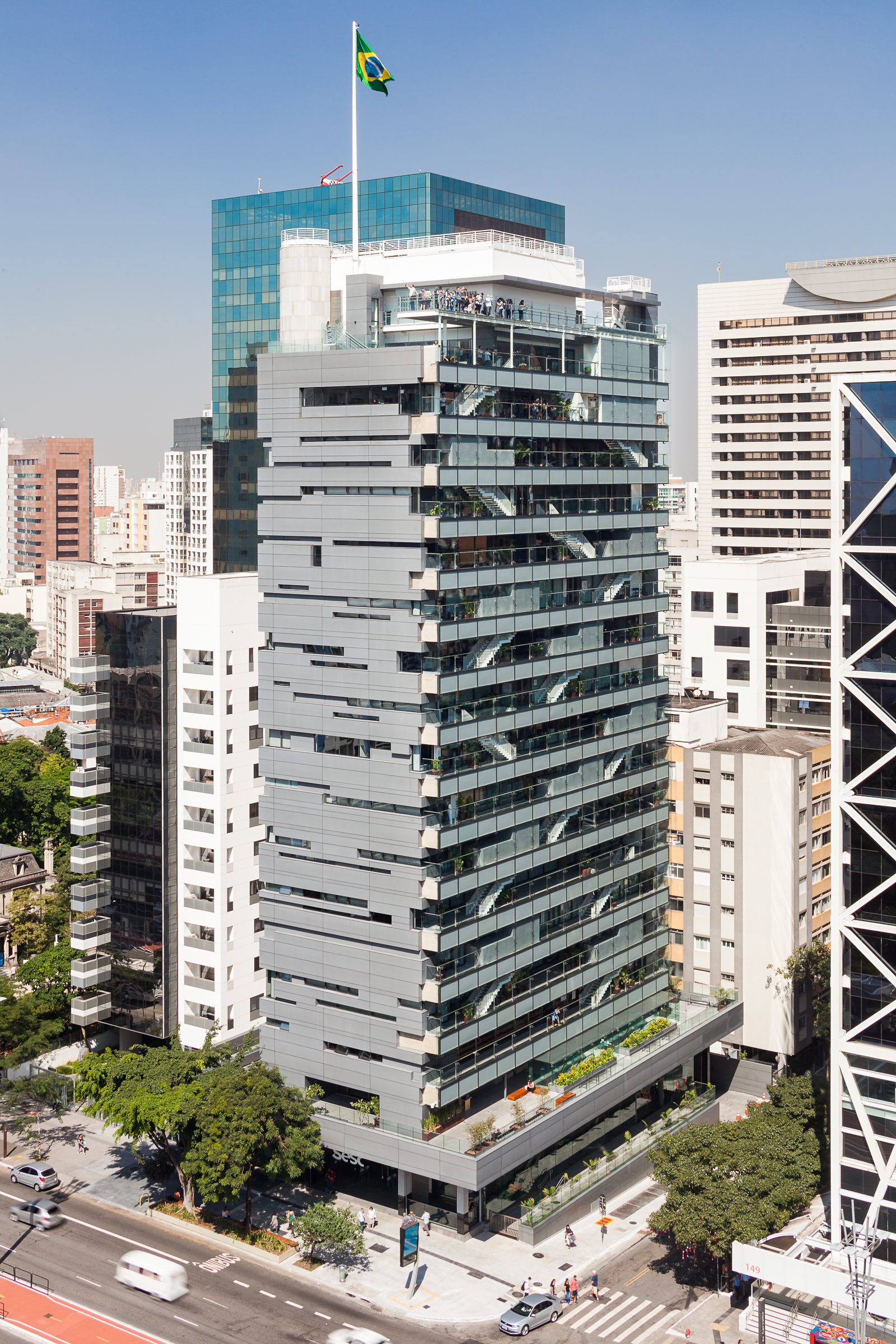
SESC Avenida Paulista is the famous Brazilian avenue's latest cultural addition. Photography: Pedro Vannucchi
When it comes to Königsberger Vannucchi’s building, the glass-clad volume was designed to be assertive, yet welcoming and approachable. The architects opted for as much visual transparency as possible, its façade revealing the various activities taking place inside.
‘The configuration of the east and west facades, with horizontal features, allows users a new look at the city while breaking with the typical typology of Paulista Avenue office buildings, announcing a new use of the old building (designed by Sérgio Pileggi and Euclides de Oliveira in the 1970s), divided between SESC and Fecomércio, and a new and democratic audience’, says project lead Gianfranco Vannucchi.
The tall building accommodates a variety of service areas, from a café, library, and children's room, to technology, arts and sports halls, exhibition space, shop and a dentist, across some 17 floors. Encouraging interaction between uses, while maintaining noise levels and public access to appropriate levels for each function, this new SESC brings Avenida Paulista one step further in its journey from corporate and financial hub to a budding cultural district.

Th high rise building contains a variety of services and flexible spaces for cultural, health and educational use. Photography: Pedro Vannucchi

A highly sculptural facade alternates opaque panels and fully transparent glass enclosures to enhance visual connections. Photography: Pedro Vannucchi
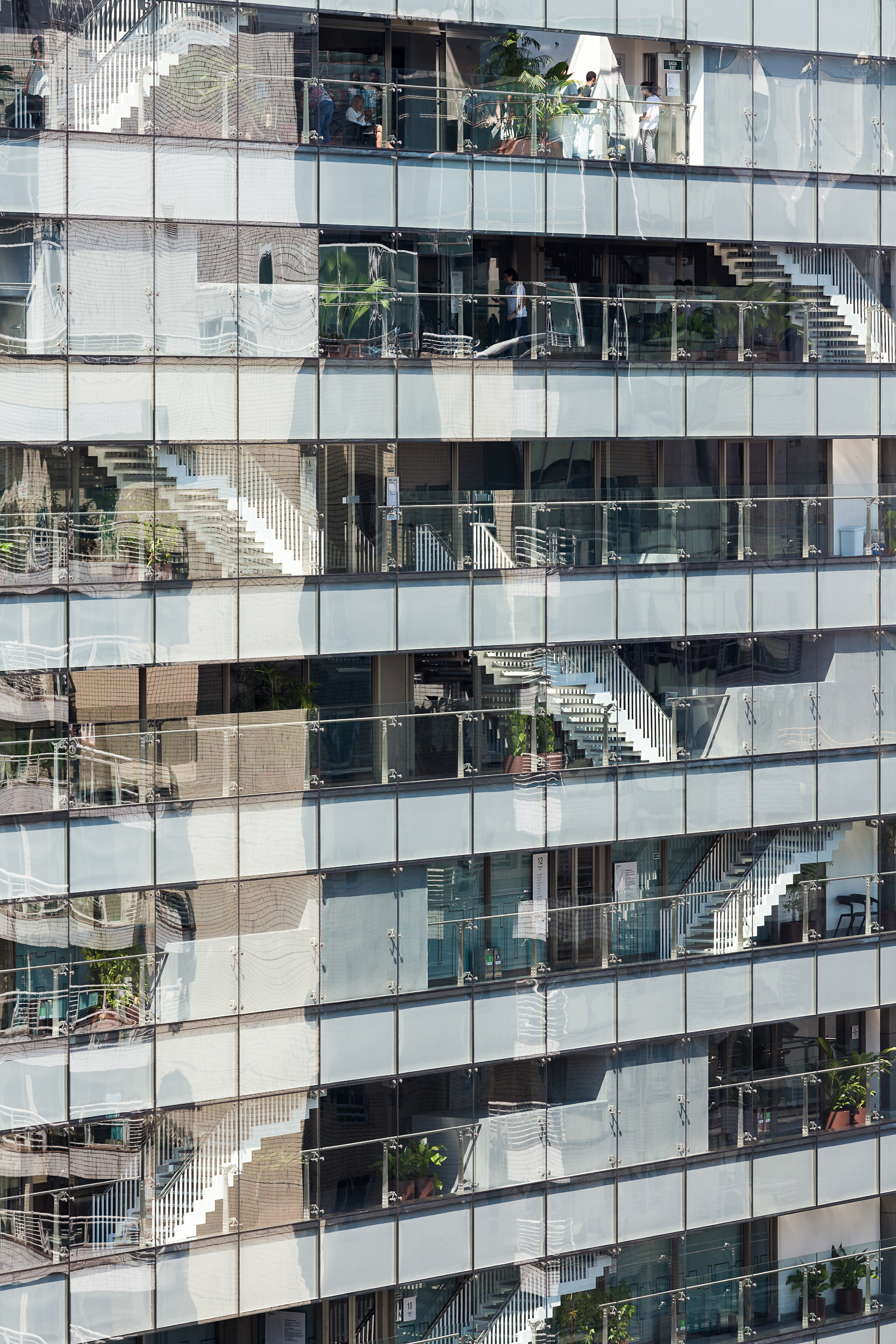
The architects wanted the interior to be visible and welcoming. Photography: Pedro Vannucchi
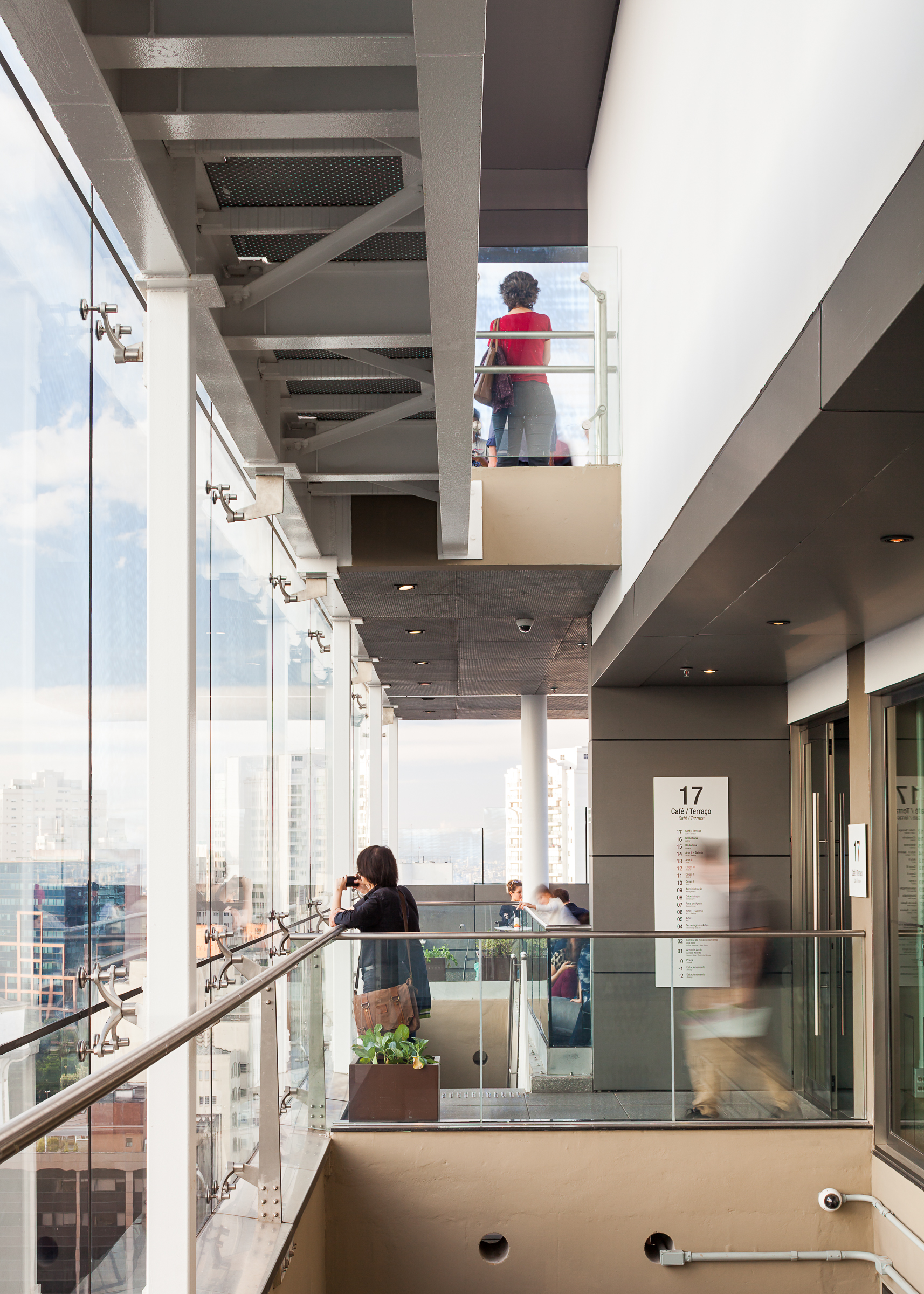
In a break from the other buildings on the street, the SESC offers extensive long views of the São Paulo skyline. Photography: Pedro Vannucchi

The building accommodates over 17 floors a variety of service areas, from a café, library, and children’s room... Photography: Pedro Vannucchi

...to technology, arts and sports halls, exhibition space, shop and a dentist. Photography: Pedro Vannucchi
INFORMATION
For more information visit the website of Konigsberger Vannucchi
Receive our daily digest of inspiration, escapism and design stories from around the world direct to your inbox.
Ellie Stathaki is the Architecture & Environment Director at Wallpaper*. She trained as an architect at the Aristotle University of Thessaloniki in Greece and studied architectural history at the Bartlett in London. Now an established journalist, she has been a member of the Wallpaper* team since 2006, visiting buildings across the globe and interviewing leading architects such as Tadao Ando and Rem Koolhaas. Ellie has also taken part in judging panels, moderated events, curated shows and contributed in books, such as The Contemporary House (Thames & Hudson, 2018), Glenn Sestig Architecture Diary (2020) and House London (2022).
-
 Sculptor Woody De Othello paints a Miami museum red for a show that ‘almost hugs you’
Sculptor Woody De Othello paints a Miami museum red for a show that ‘almost hugs you’The Miami-born, California-based artist opens his first museum exhibition in his hometown as an experiential journey through life and lifeless objects
-
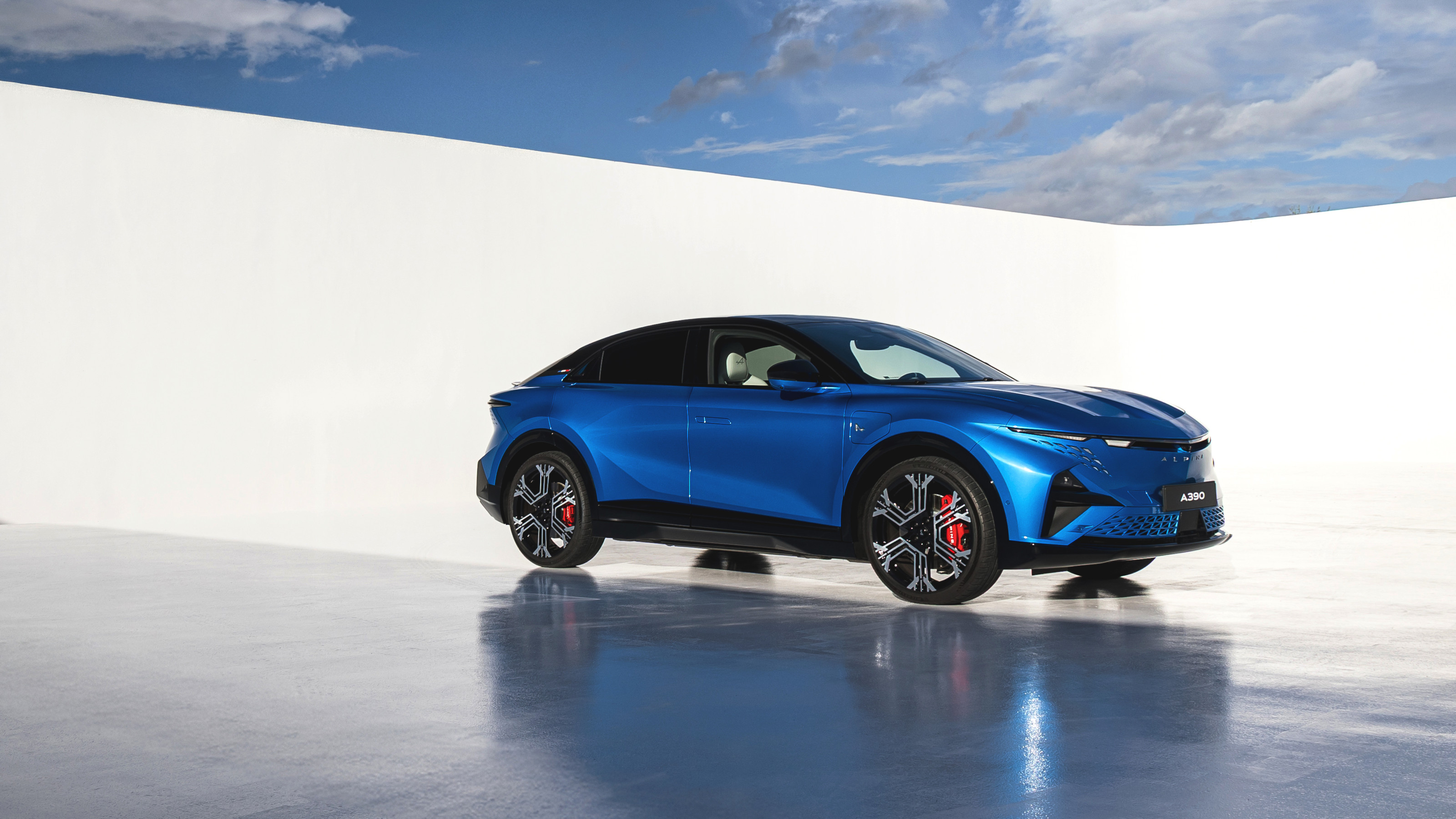 Alpine A390 GT: French, fast and fun. A sporting EV with a real sense of occasion
Alpine A390 GT: French, fast and fun. A sporting EV with a real sense of occasionAlpine doubles down on its fast electric credentials with the A390 GT, the French performance brand’s largest car to date
-
 Forget smart homes, Doma's 'intelligent' doors open at the sight of a familiar face
Forget smart homes, Doma's 'intelligent' doors open at the sight of a familiar faceYves Béhar and Jason Johnson have founded Doma, a tech start-up dedicated to seamlessly integrating tech into your daily life
-
 A spectacular new Brazilian house in Triângulo Mineiro revels in the luxury of space
A spectacular new Brazilian house in Triângulo Mineiro revels in the luxury of spaceCasa Muxarabi takes its name from the lattice walls that create ever-changing patterns of light across its generously scaled interiors
-
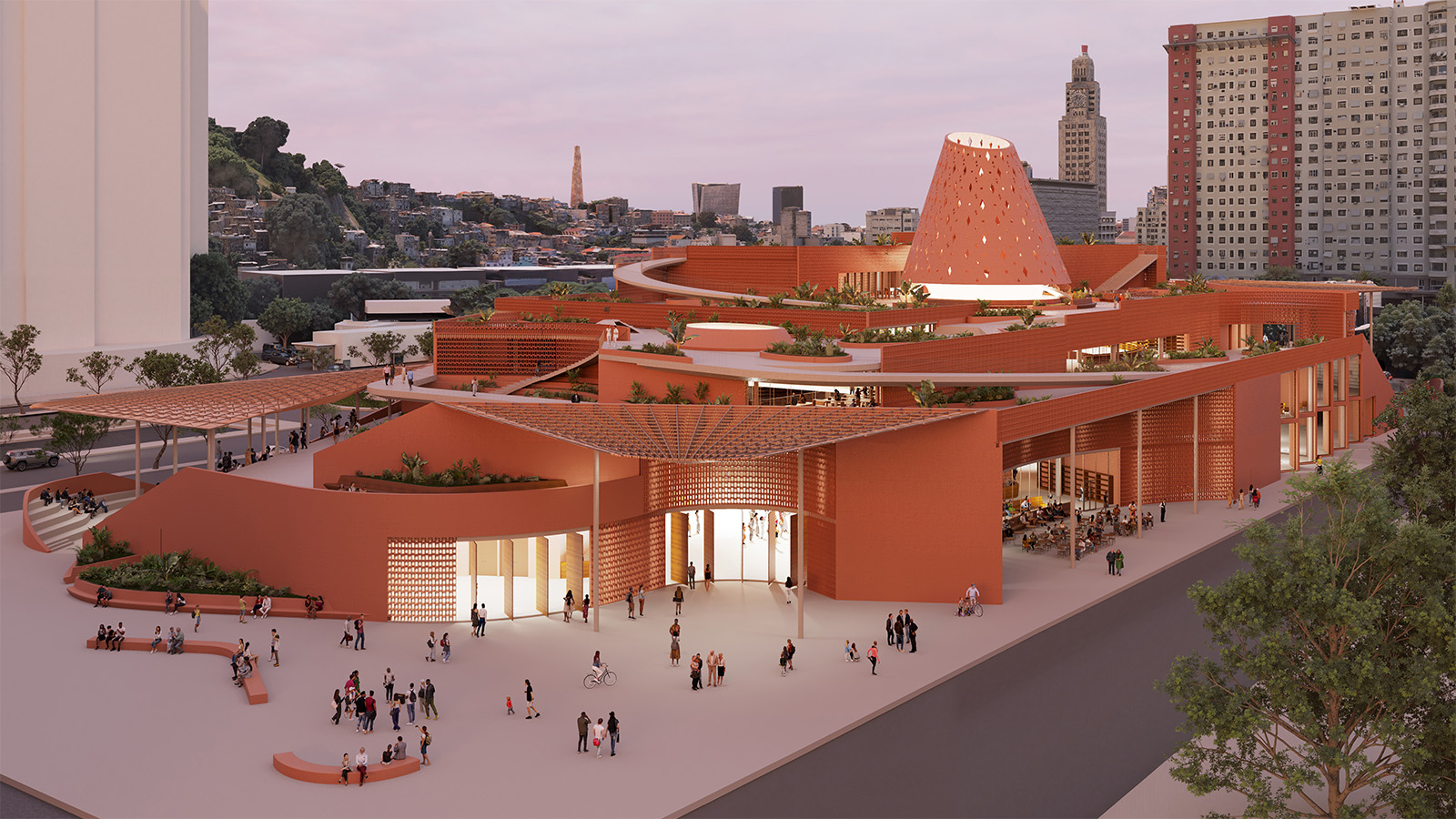 An exclusive look at Francis Kéré’s new library in Rio de Janeiro, the architect’s first project in South America
An exclusive look at Francis Kéré’s new library in Rio de Janeiro, the architect’s first project in South AmericaBiblioteca dos Saberes (The House of Wisdom) by Kéré Architecture is inspired by the 'tree of knowledge', and acts as a meeting point for different communities
-
 A Brasília apartment harnesses the power of optical illusion
A Brasília apartment harnesses the power of optical illusionCoDa Arquitetura’s Moiré apartment in the Brazilian capital uses smart materials to create visual contrast and an artful welcome
-
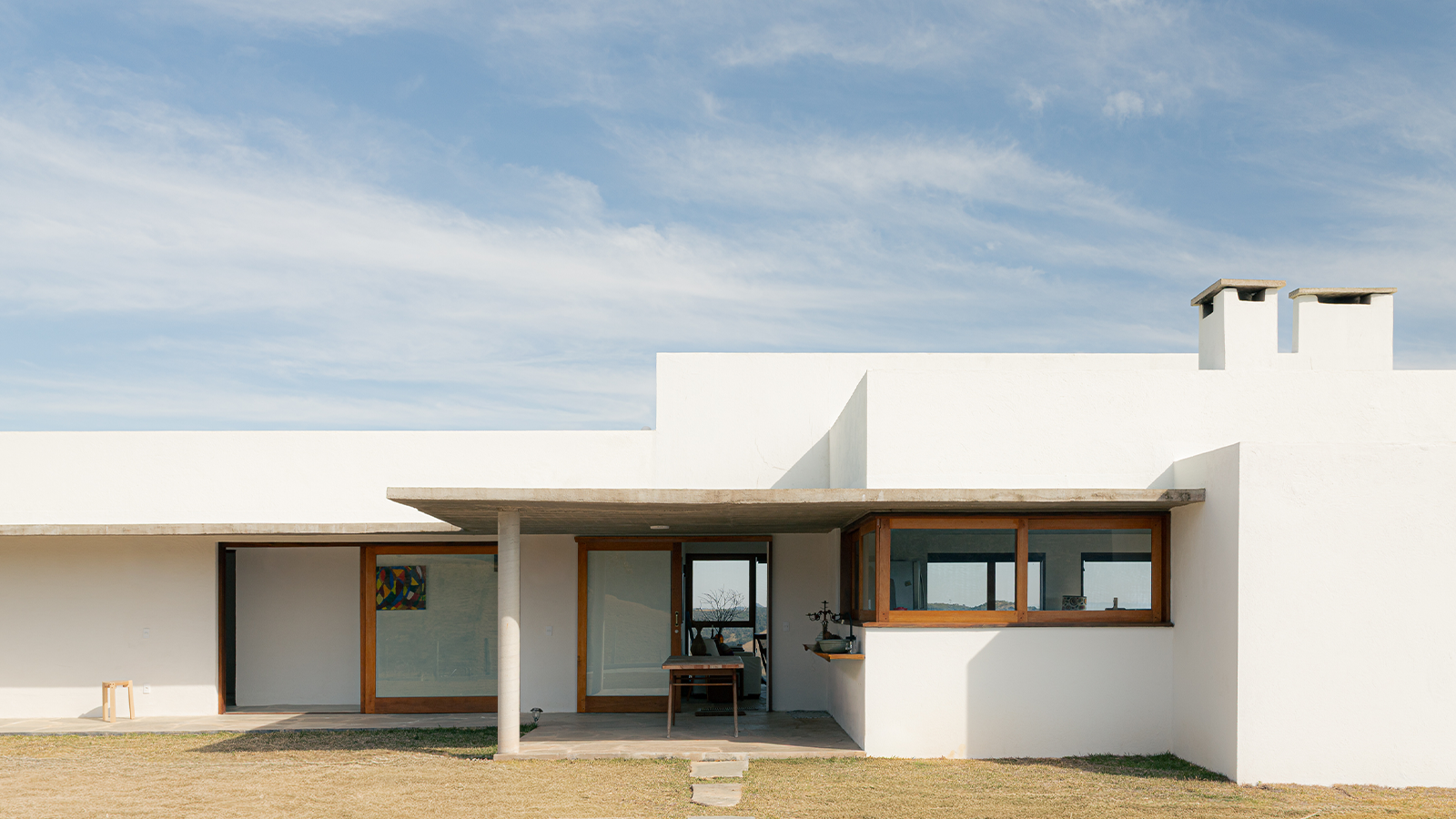 Inspired by farmhouses, a Cunha residence unites cosy charm with contemporary Brazilian living
Inspired by farmhouses, a Cunha residence unites cosy charm with contemporary Brazilian livingWhen designing this home in Cunha, upstate São Paulo, architect Roberto Brotero wanted the structure to become 'part of the mountains, without disappearing into them'
-
 Arts institution Pivô breathes new life into neglected Lina Bo Bardi building in Bahia
Arts institution Pivô breathes new life into neglected Lina Bo Bardi building in BahiaNon-profit cultural institution Pivô is reactivating a Lina Bo Bardi landmark in Salvador da Bahia in a bid to foster artistic dialogue and community engagement
-
 Tropical gardens envelop this contemporary Brazilian home in São Paulo state
Tropical gardens envelop this contemporary Brazilian home in São Paulo stateIn the suburbs of Itupeva, Serena House by architects Padovani acts as a countryside refuge from the rush of city living
-
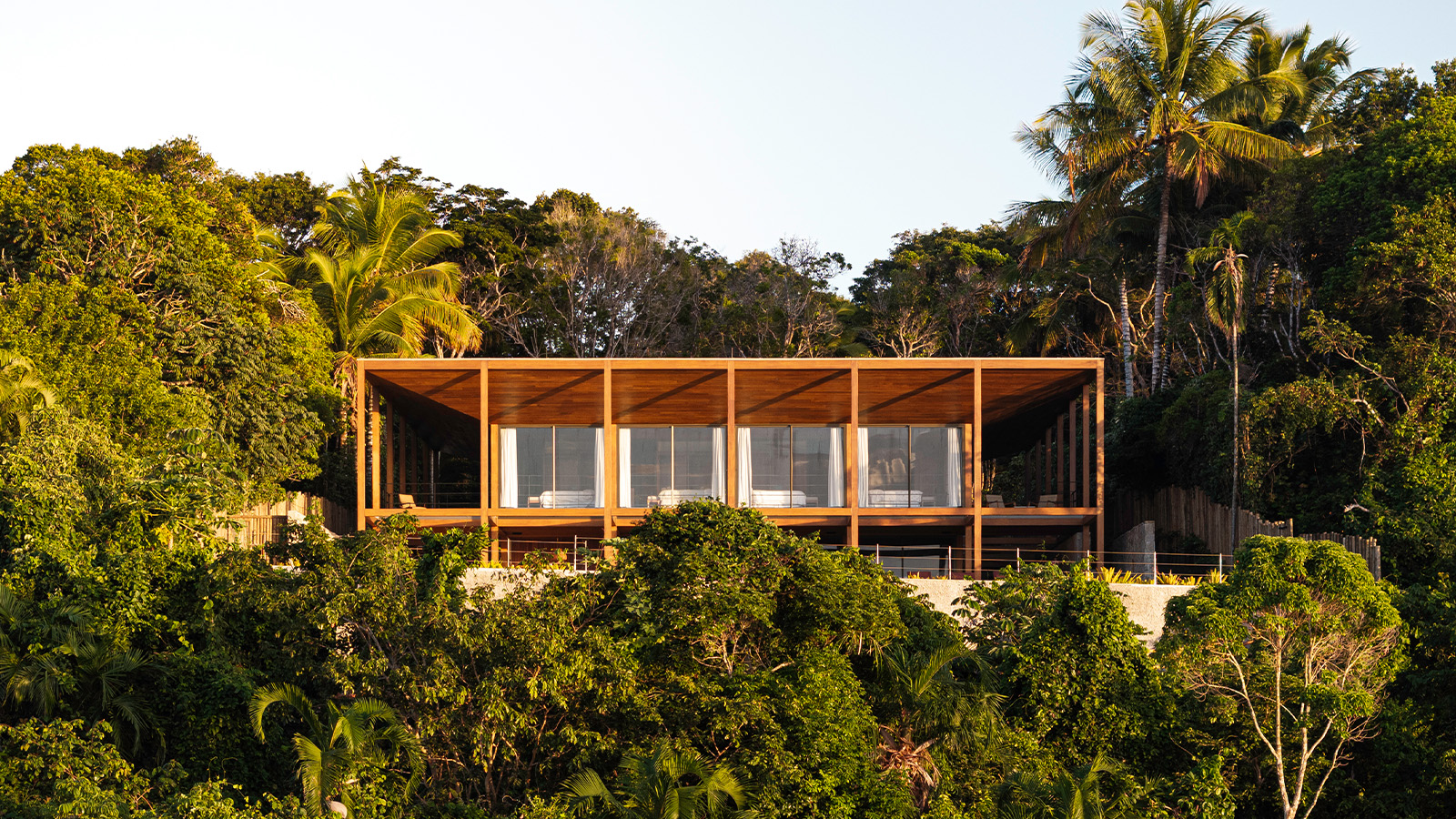 Itapororoca House blends seamlessly with Brazil’s lush coastal landscape
Itapororoca House blends seamlessly with Brazil’s lush coastal landscapeDesigned by Bloco Arquitetos, Itapororoca House is a treetop residence in Bahia, Brazil, offering a large wrap-around veranda to invite nature in
-
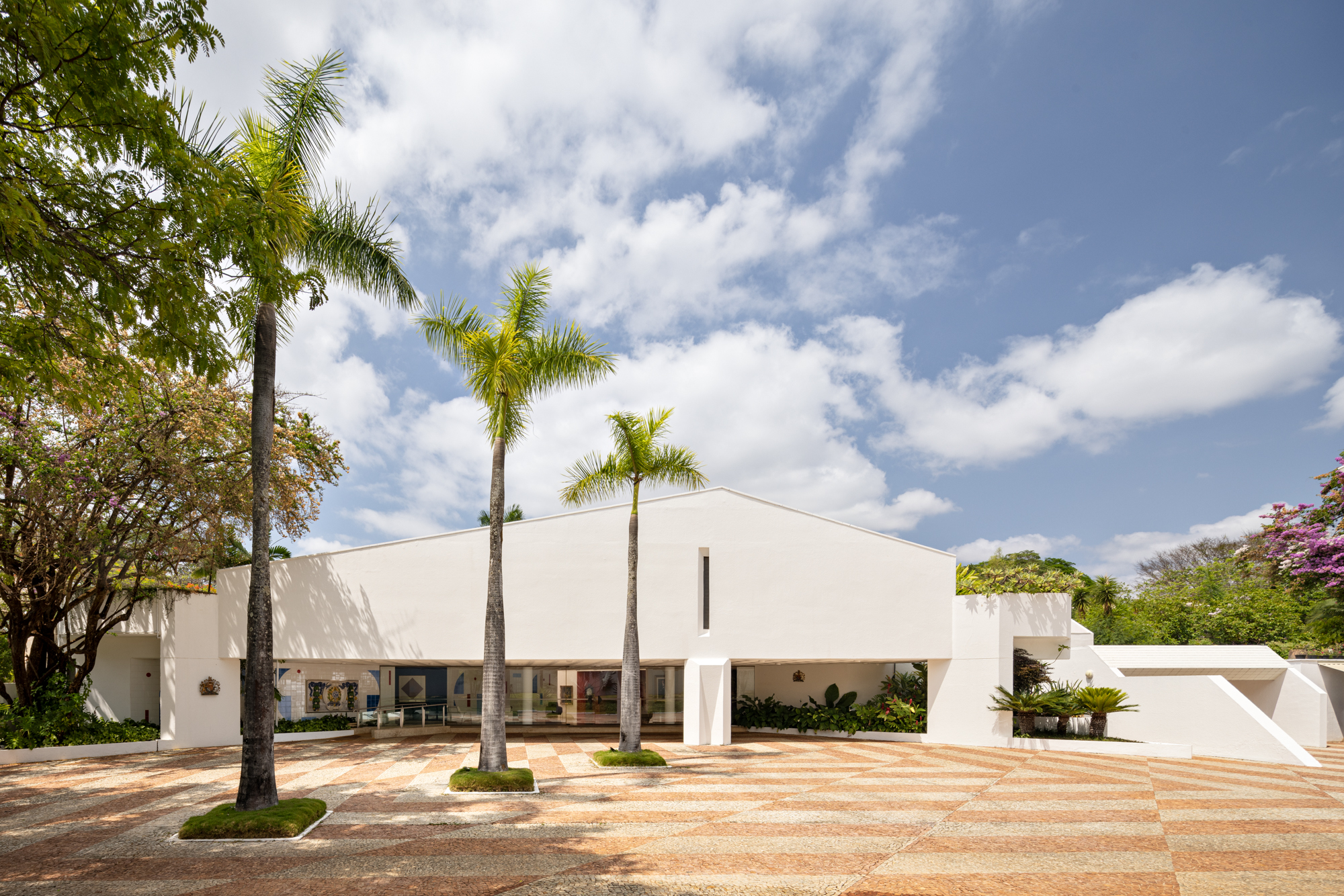 A postmodernist home reborn: we tour the British embassy in Brazil
A postmodernist home reborn: we tour the British embassy in BrazilWe tour the British Embassy in Brazil after its thorough renovation by Hersen Mendes Arquitetura, which breathes new life into a postmodernist structure within the country's famous modernist capital